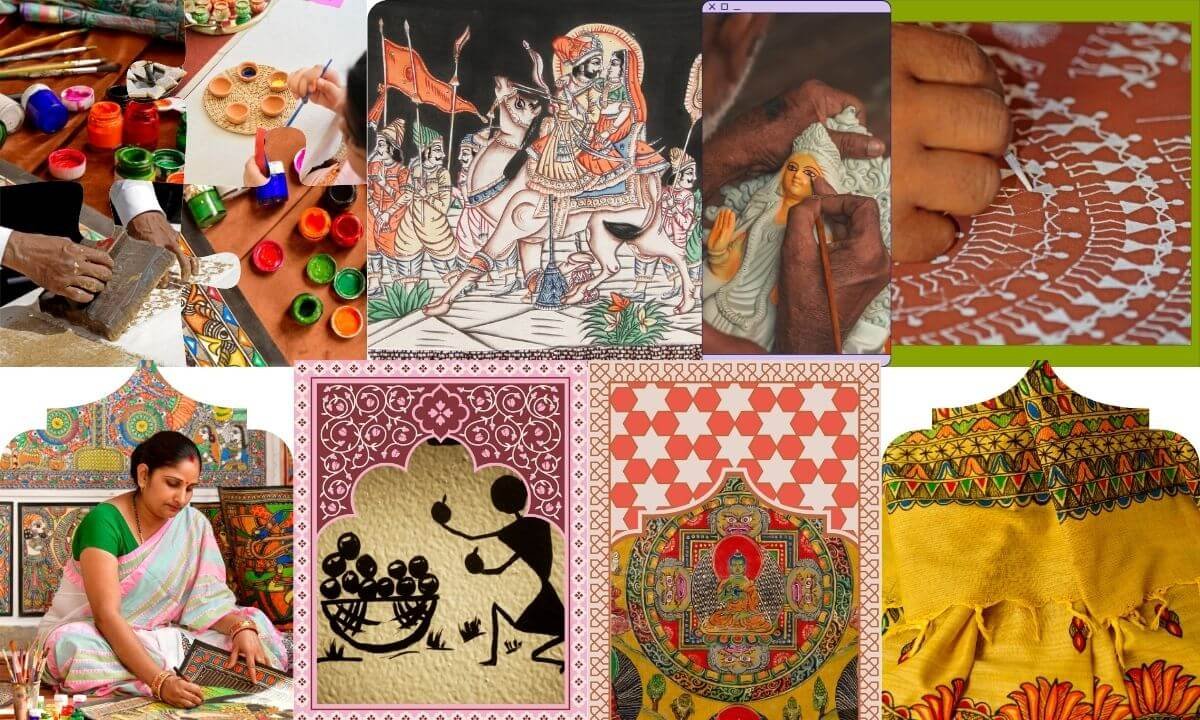Photo Essay: The Vibrant Colors of Rural India
Few places on Earth are as visually rich, textured, and deeply symbolic as rural India. Beyond the urban chaos and glossy travel brochures lies a slower, more soulful world — one where time dances with tradition, and every color tells a story.
From hand-painted homes and intricate handicrafts to the daily hues of village life and vibrant festivals, rural India is a living canvas. This photo essay invites you to travel through fields and courtyards, fairs and temples, capturing the raw beauty and authenticity of India’s countryside.
Let’s journey through some of the most picturesque and culturally immersive villages and small towns that truly represent the vibrant spirit of rural India.
1. Shekhawati, Rajasthan – Painted Walls That Whisper History
Shekhawati, located in northeastern Rajasthan, is often called the “open-air art gallery” of India. Towns like Mandawa, Nawalgarh, and Fatehpur are filled with havelis (mansions) painted with elaborate murals.
What to Photograph: Fading frescoes, symmetrical courtyards, and rustic doorways.
Color Palette: Earthy reds, faded blues, turmeric yellows, and pastel pinks.
Highlight: Capture artisans restoring century-old wall paintings, or locals in vibrant turbans walking past ornate facades.
It’s where rural India effortlessly blends legacy with lived-in charm.
2. Kalap, Uttarakhand – The High Village With Low Noise
Accessible only by a 10 km hike, Kalap is a remote village nestled in the Garhwal Himalayas. It’s one of India’s best-kept secrets and a photographer’s dream.
What to Photograph: Wooden Garhwali homes, shepherds herding sheep, village children running barefoot across meadows.
Color Palette: Sky blue skies, pine green forests, and golden wheat fields.
Highlight: Document the rhythmic pace of farming, weaving, and communal cooking.
Here, the colors are not just in clothes or buildings—but in lifestyles untouched by the modern rush.
3. Badami, Karnataka – Where Temples and Textiles Collide
In northern Karnataka, Badami is known for its rock-cut cave temples, but its rural surroundings are equally fascinating.
What to Photograph: Brightly clothed women carrying pots on their heads, vibrant weekly bazaars, temple rituals at dawn.
Color Palette: Deep maroons, indigo-dyed fabrics, and terracotta stone.
Highlight: Traditional handlooms and dyeing vats near Ilkal, where bright pink and red sarees dry under the sun.
Badami offers a raw glimpse into rural India’s spiritual and textile traditions coexisting beautifully.
4. Kutch, Gujarat – Where Art and Earth Come Together
Beyond the famous Rann of Kutch lies a network of artistic villages like Bhujodi, Nirona, and Ludiya. Each village has its own specialty—from embroidery to lacquer work.
What to Photograph: Women hand-embroidering textiles, kids playing beside mirror-studded mud homes, camel carts silhouetted against golden deserts.
Color Palette: Jewel tones—emeralds, sapphire blues, bright reds—offset by beige desert hues.
Highlight: Catch the magic during Rann Utsav, when rural artistry is on full display.
This is rural India at its most creative and colorful.
5. Majuli, Assam – A River Island Rooted in Culture
Majuli is one of the world’s largest river islands, nestled in the Brahmaputra River. It’s home to unique Assamese satras (monastic institutions) and lush rice paddies.
What to Photograph: Bamboo homes, mask-making workshops, and monks in deep maroon robes during prayer.
Color Palette: Emerald green fields, golden mustard blossoms, white dhotis, and river blues.
Highlight: Capture boat rides across misty mornings and the simple joy of fishing with handmade nets.
Majuli’s peaceful pace makes it ideal for slow travel and deeply immersive rural India photography.
6. Pochampally, Telangana – The Looms of Color
Known for its Ikat weaving tradition, Pochampally is just an hour from Hyderabad yet steeped in age-old craftsmanship.
What to Photograph: Dyeing pits, handlooms, women spinning yarns, and walls adorned with rangolis.
Color Palette: Bright oranges, sea greens, and ikat patterns in every color imaginable.
Highlight: Visit during festive seasons like Sankranti for traditional attire and cultural performances.
This village represents how the spirit of rural India can influence global design aesthetics..
7. Chilika Lake, Odisha – Life Between Land and Lagoon
While famous for birdwatching, the rural areas around Chilika Lake like Satapada and Mangalajodi offer vibrant glimpses of lakeside life.
What to Photograph: Fishermen casting nets at sunrise, flamingos taking flight, women selling fish on woven mats.
Color Palette: Coral pink skies, teal-blue waters, fish baskets, and silver-scaled catches.
Highlight: Document the traditional wooden boats with sails made from colorful fabric.
The rhythms of life around the water make this a stunning slice of rural India.
Why Photograph Rural India?
Authenticity: Villages hold onto traditions that cities have long abandoned.
Color Theory: From clothes and markets to walls and festivals, there’s an explosion of natural and cultural color.
Human Connection: Faces, gestures, and smiles tell stories that no monument ever could.
Whether you’re a casual smartphone user or a DSLR-carrying pro, rural India photography is your gateway to emotion, history, and beauty.
Quick Tips for Photographing in Rural India
Ask First: Always get consent before photographing people.
Golden Hours Rule: Shoot during sunrise or sunset for natural warmth.
Carry Backup: Electricity may be limited, so bring power banks or spare batteries.
Be Respectful: Don’t turn sacred spaces or rituals into photo ops.
Support Locals: Buy a handmade item or donate printed portraits.
Final Thoughts
Rural India is not just a destination. It’s a feeling. A story told in hues of turmeric and indigo, in sounds of temple bells and wooden looms, in textures of mud, fabric, and faith.
Each image you capture is a memory shared—a way to preserve and honor the timeless beauty of everyday life in India’s villages. So take your camera, your curiosity, and a kind heart—and discover the vibrant stories that wait for you in the winding lanes of rural India.

